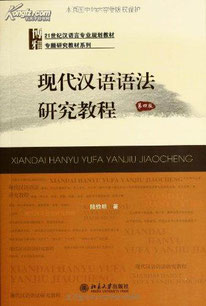Skype Learn Chinese--the bridge: A New Way to Mandarin Chinese
This book is written for English-speaking students who are taking Skype Learn Chinese courses. A basic level vocabulary and understanding of Chinese grammar and culture is presented in this Skype Learn Chinese series. It is an effort to introduce the Skype Learn Chinese students to the language by explaining its basic principles in simple steps. The purpose is to prepare the student with a foundation on which to build, with confidence, its ensuing complexities.
Skype Learn Chinese A New Way to Mandarin Chinese Lesson 13
Grammar
Summary
Skype Learn Chinese A New Way to Mandarin Chinese Lesson 13 Part I

English is a language of word meanings, that are precisely defined in dictionaries, with a grammar that adjusts their spelling and pronunciation to fit the rules of expression for different parts of speech in Skype Learn Chinese. For example, ‘I, me, my’, define shades of meaning for the same individual by changing spelling to fit their different grammatical roles. In Skype Learn Chinese, English is, essentially, a rational, ’front lobe’ language that has the capacity for the nuances, etc. of literature and poetry.
In Skype Learn Chinese, Chinese is a language of word ideas whose associated meanings are explained, in dictionaries, by examples of their context in Skype Learn Chinese sentences. It is, essentially, a monosyllabic language which does not ‘adjust’ the spelling of its words to change their meaning or indicate their grammatical significance in Skype Learn Chinese. It adds a word to mark a grammatical situation in a sentence. For example, wǒ is ‘I’ in Skype Learn Chinese and it also means ‘me’. My, the adjectival condition of ‘I, me’, is wǒ with the marker ‘de’ (wǒde) to indicate that wǒ is an adjective. This is similar to adding punctuation to a sentence and it is such a simple form of grammar that in Skype Learn Chinese, Chinese never needed a grammar book until the Europeans arrived in the 18th century.
Every sentence in Skype Learn Chinese, whether a statement, a question or a command, follows this format except when it is changed just for the emphasis of making the change.
Time (date, day, etc.) replaces verb tenses, although markers, such as ‘le and zhe’, etc., following a verb (verb-le, zhe) to indicate a verb activity has stopped (le) or is continuing (-ing, zhe), are often translated as ’past’ and ’continuous’ ‘tenses’ of the verb in Skype Learn Chinese. The translation is confusing, however, as, “He will stop working at 7pm tonight”, gets a ‘le’ (stop) in Chinese in Skype Learn Chinese, but is not past tense or (zhe) continuous.
Adjectives precede the noun and adverbs precede the verb of Skype Learn Chinese, normally, but adverbs indicating ’result’ and ’extent’ of a verb’s activity follow the verb, and a ’de’, marker word points them all out in Skype Learn Chinese.
Skype Learn Chinese A New Way to Mandarin Chinese Lesson 13 Part II
Measure words (a ‘meter’ of length) and Classifiers (‘head’ of horses, cattle) occur much more frequently in Skype Learn Chinese than English, because the idea of an object, in Chinese, is general. For example, 人rén, means Man (men in general or mankind) unless it is specified: this ’gè’ man, two ’gè’ men, etc. (where gè is a classifier meaning “individual”, or the context is clearly referring to an individual). The standard translation of classifiers in Skype Learn Chinese makes more difficulties for the English-speaking student, however.张zhāng is a classifier for sheets of paper (newspapers, etc.) and bedsheets, and so the standard translation of zhāng is sheet, a word with a dictionary definition. So, when the student sees zhāng as a classifier for a table, DVD, face etc. it becomes another ‘special’ exception to the standard ‘rule’ for the students in Skype Learn Chinese to learn separately. In Skype Learn Chinese, the idea of zhāng in Chinese, however, is “flat things”, and, with due respect, this might be applied to the face of a building, and, therefore, by extension, to other faces (?!). Students in Skype Learn Chinese can learn more about this.
One problem in Skype Learn Chinese that the early scribes had with classifiers was what to do with a classifier when it wasn’t classifying anything but simply meant “flat things”. In Skype Learn Chinese, it didn’t need a classifier. It was one. Plus, the very clever solution to the problem that classifiers might be used as an object instead of a classifier, was to give them very specific meanings that wouldn’t normally be used in everyday conversations In Skype Learn Chinese. 条tiáo “Long, narrow, flexible things”, etc. However, certain words do not ‘take’ classifiers. In Skype Learn Chinese, family members are not treated as ’general’ objects to be ‘graded’ by classifiers and the family home is not either (my mom, your house). Nor are the names of books In Skype Learn Chinese, plays, people (which President Bush do you mean? Oh, that one!) etc. There are more things to learn about grammar, but this is an introduction to show that Chinese grammar In Skype Learn Chinese is a subject with reliable rules, (but it never needed a book to explain them ! )
